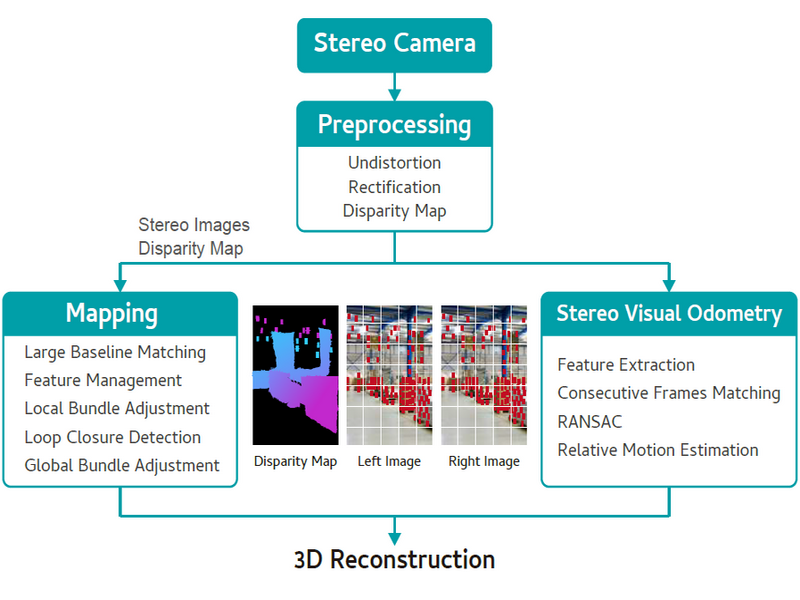The popularization of autonomous mobile robot applications is an inevitable trend
As a flawless combination of impressive stylish design and excellent computing capability, the EC70A-SU/EC70A-KU Series based on the high-end 6th Gen Intel® Core™ i7/i5/i3 processors deliver outstanding processing capability in a fanless and compact enclosure. And it is designed for space-limited and compute-intensive solutions, such as the emerging Autonomous Mobile Robot (AMR).
Region: Europe
Country: Denmark
Application: AMR for Transportation
Solution: DFI EC70A-SU/EC70A-KU Series
In recent years, with the popularization of artificial intelligence applications and the development of around-the-clock global logistics, the demand for mobile robots in industries dominated by e-commerce and manufacturing has continued to rise.
Affected by the raging COVID-19, the public avoids going out in fear of infection. Not only has e-commerce orders surged, but major e-commerce companies must also expand the deployment of autonomous mobile robots (AMR, Autonomous Mobile Robot) and automatic guidance Vehicles (AGV, Automated Guided Vehicle).
The widening labor shortage due to the intensification of the COVID-19 requires major economies to replan the manufacturing and supply chains. Based on various considerations such as nearby production, reduction of human resources, and improvement of production efficiency, it is bound to drive the growth of the robotics industry. It is expected that in 2020, the market revenue of mobile robots will grow by 25% and by 50% in 2021. In 2024, the global mobile robot market revenue will reach 8.79 billion U.S. dollars, of which, the investment from manufacturing industries is about 5 billion U.S. dollars.
AMR does not need to be deployed in a pre-planned environment like AGV (such as rebuilding a factory, laying tracks, and leveling the ground), the overall deployment cost is relatively lower and it is also easy to cope with unexpected situations such as obstacles during transportation on suspending operations. Therefore, as the navigation technology for self-driving car advances, an AMR with autonomous guidance, machine vision, and map reconstruction capabilities is equivalent to an automatic car equipped with GPS and pre-installed maps, which can automatically determine the most effective path and avoid obstacles. For areas with poor warehouse conditions and severe ground subsidence, AMR's obstacle-crossing ability and environmental adaptability are needed. Therefore, because of the higher flexibility of application deployment, AMR has become a priority product item in manufacturing, logistics and warehousing, and medical care.
Smarter robots need more reliable computing brain
But AMR, which is smarter than AGV, needs more powerful computing performance, integration of more diverse sensors, and durability to withstand different environments.
On the whole, its control unit must meet the following conditions:
- High performance.
- It has enough performance capable for the off-the-shelf robot software and reserves the margin for future software upgrades.
- Real-time calculation of positioning and map reconstruction algorithms.
- Complete I/O interface.
- Easily integrate a wide range of sensors and actuators.
- It can receive high-speed video streams from depth cameras and data streams from LiDAR (Light Detection And Ranging).
- Low power consumption.
- Extended battery operating time.
- Reduce the battery loss caused by frequent charging.
- Resistance to harsh environments.
- It can operate in a wide temperature environment for a long time, resist signal interference, and withstand vibration during movement.
- Longer Mean Time Between Failures (MTBF), lower Mean Time To Failures (MTTF), and shorter Mean Time To Repair (MTTR).
- Robust wireless network.
- Stable and reliable transmission of data and control commands.
- Convenient self-diagnosis and remote troubleshooting.
- Smaller size.
- Facilitate system integration.
- Improve the flexibility of robot mechanism design.
In recent years, Intel NUC (Next Unit of Computing) has driven the trend of compact computers and has become the initial choice for some robot manufacturers in the early stages of product development. However, the application-oriented NUC and similar products for personal computers cannot meet the following requirements.
● High reliability and long life cycle.
● Multiple sensor interfaces, such as popular RS-422 for laser scanners.
● No performance loss is caused by vibration and signal interference.
If a system-on-chip platform with ARM instruction set architecture (such as Nvidia Jetson Xavier) is adopted, it is difficult to quickly respond to changes in demand due to performance bottlenecks. Therefore, robots need industrial computer-level control units to leverage the x86 ecosystem and mature software resources to ensure reliability and durability, improve operating efficiency, reduce total cost of ownership (TCO), and overall capital expenditures (CAPEX).








,有助於車隊管理員管理駕駛行為、運動感測、急煞車和衝擊偵測.jpg?timestamp=1689918406.42007)





